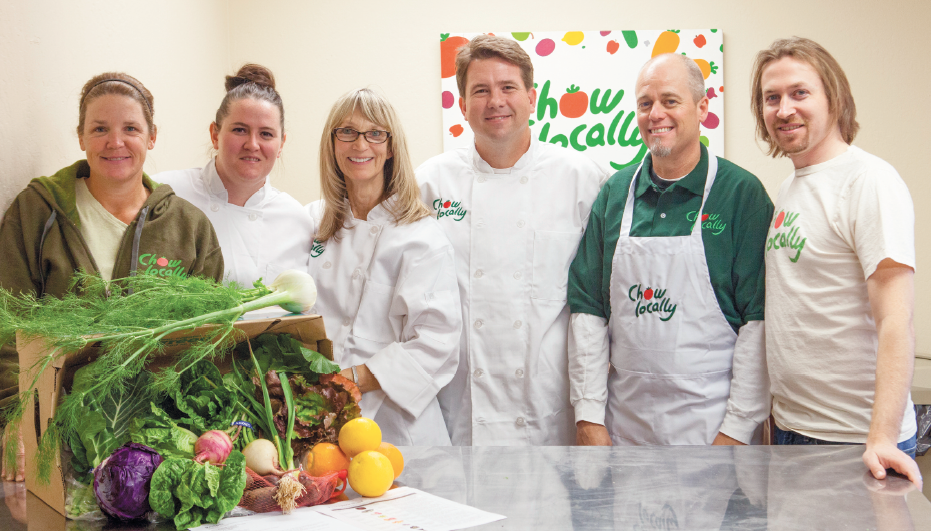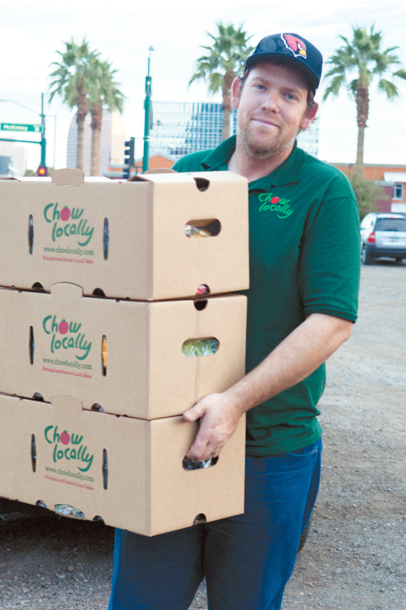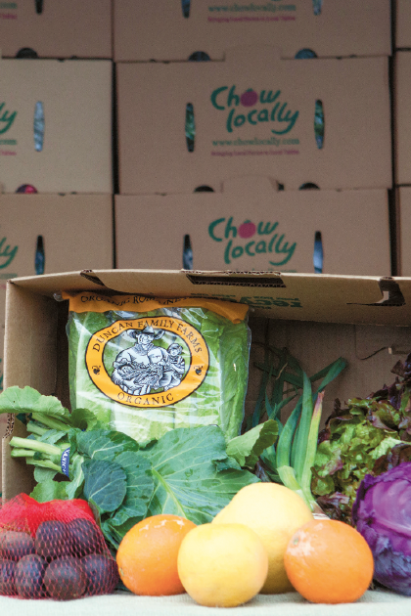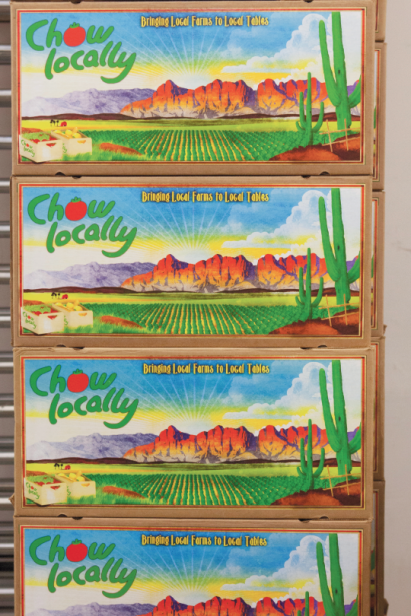Grazing Arizona: How Food Hubs Help Local Farmers Grow
Trends change pretty quickly nowadays. Remember the term “locavores”? We used to talk about them all the time. In fact, I was one for a while. As a reader of this magazine, it’s a good guess that you were as well. Do you remember the “100–mile diet”? When was the last time you heard about that?
“Local,” now a sometimes overused term, has come to mean something broader than its narrow 100-mile definition. For most of us who want to eat as much locally produced food as possible, we’re OK with sticking to food grown any place in Arizona or, depending on the season, even as far away as Colorado and California.
What we don’t want is food coming clear across the United States or even from another country. Americans continue to be interested in knowing where their food comes from and how it was grown. Local food, although still a small portion of the total U.S. food market, continues to grow.
The terms may have changed, but the trend toward eating more locally produced foods both for health and environmental reasons has reached a broader audience than just the locavore movement. The difference is most of us just live our lives that way now and no longer think of it as a “movement” requiring a name.
If you are the kind of person who does want a close personal relationship with your food, then you probably already spend some time wandering your local farmers’ market or perhaps you subscribe to a community-supported agriculture (CSA) harvest subscription program or maybe you even grow some of your own food.
I buy locally produced food as much as possible, even seeking it out at supermarkets when it’s available, because I’m concerned about the environment, because I’m concerned about how my food is grown and because I want to support our local economy. What I never really gave much thought to before was what the farmer had to go through to get that head of cauliflower to the farmers’ market where I buy it. I mean, I know about planting, nurturing, growing—but what about the business end of running an income-producing farm?
So I spoke with Derek Slife and Christopher Wharton, co-founders of Chow Locally, a CSA that serves the Phoenix metropolitan area about their operation.
Chow Locally considers “local” to be anything grown within the borders of Arizona. What’s different about the Chow Locally CSA operation is that they have established a “food hub” rather than growing all of the food themselves. With the food hub, they source their produce from farmers all over the state.
The food hub is the latest trend in the local food arena. USDA defines a food hub as “a business or organization that actively manages the aggregation, distribution and marketing of source-identified food products primarily from local and regional producers to strengthen their availability to satisfy wholesale, retail and institutional demand.” In other words, Chris and Derek organized or aggregated a group of farmers to make it easier for the farmers to reach the consumer, to make it easier for the CSA to get the produce it needs for its business and to make it easier for consumers to buy the produce.
A food hub is an economic strategy that benefits primarily small and mid-sized farmers by allowing them to meet consumer demand without having to work farmers’ markets or attempt to locate other outlets for their produce. Small farmers, many in rural areas around the state, may have a hard time arranging distribution and processing of their products as well as marketing. Food hubs, like Chow Locally, make all of these issues easier to deal with.
With a food hub in place, farmers don’t have to do any direct marketing to consumers. They don’t need their own website. They don’t have to worry about signing up people for a separate CSA. They don’t have to worry about weather ruining a farmers’ market day. The farmer can concentrate on growing while the food hub takes care of the distribution, the processing, the marketing and often the transportation.
For some small farmers, Chow Locally even goes beyond aggregating their produce: It has arrangements with several Arizona farmers (more to come) to purchase their crops. Through their Request for Growing program, a farmer knows in advance that his broccoli, for instance, is sold before it’s even planted. And Chow Locally knows, barring Mother Nature’s interference, that they will have plenty of broccoli to fill their baskets. Whatever Chow Locally takes will get sold.
Chow Locally co-founders describe their operation as a “farm incubator.” With their Request for Growing program, they help farmers who might otherwise have trouble getting the money to get started.
“We offer money up front to help with the farmer’s costs and we are assured of a crop in return,” explains Derek. It’s a win-win for both parties.
“We found that for the RFG process to work best, we need to sit down with each farmer and tailor it slightly for their needs. Every farmer is in a different situation and has unique problems, which we want to help overcome. Much of these discussions are regarding building trust between both of us. We don’t want this process to seem, ‘one size fits all.’ If any farmer is interested in working with us and meets our sustainability/organic principles, then we would love for them to reach out to us.”
By participating in the food hub’s Request for Growing program, farmers have the opportunity to plan production because they know that their entire crop will be sold. Chow Locally benefits because they know what and how much they can offer to their subscribers. And we as consumers benefit by receiving beautiful, locally grown produce and helping to keep our local farmers in business. Now that’s a trend I can support.
CHOW LOCALLY
From a consumer standpoint, the Chow Locally “Chow Share” program looks pretty much like every other CSA: You subscribe to the service in advance, and each week you receive a box of produce containing seven to 10 items grown in Arizona that you pick up at one of Chow Locally’s 20+ distribution locations.
Behind the scenes, Chow Locally sources from over 25 local farmers and producers (both small and large) to determine what to include in that week’s box. The farmers deliver to Chow Locally’s central warehouse, where the produce is processed and sorted and the content sheet and recipes for the box are prepared. Chow Locally also supports Facebook, Instagram and Twitter pages as well as a blog with videos showing what to do with the more unusual vegetables, along with healthy recipes and answers to subscriber questions.
For more information, see chowlocally.com.
WANT TO KNOW MORE ABOUT FOOD HUBS?
The Chow Locally Food Hub is just one example of a local food hub in action. Food hubs have sprung up all over the country to assist farmers in getting their products to market. There are almost as many variations on the food hub concept as there are food hubs: Some, like Chow Locally, focus primarily on retail markets; others make wholesale markets a priority. Some have extensive transport, processing and value-added production facilities; others are more bare-bones operations. For more information, see:
The National Good Food Network, the nation’s premier source for food hub information, webinars and a national conference (in Raleigh, NC, in March 2014). See foodhub.info
USDA has economic studies, resource guides and a list of food hubs. See ams.usda.gov/foodhubs








